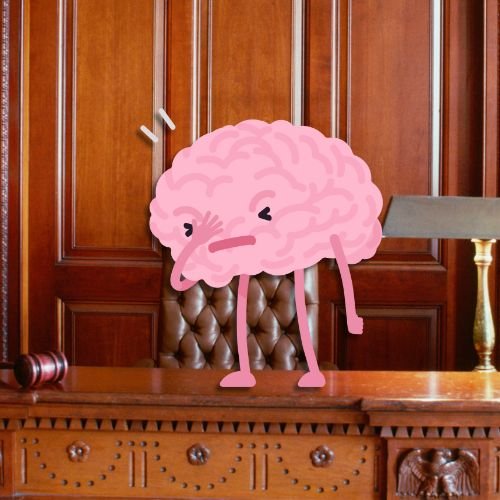
Point Evidence Analysis Develop (PEAD): Courtroom Tutorial
What is a PEAD Paragraph?
PEAD paragraphs (also called PEAL, PEED, and many other things) are paragraphs structured to answer questions comprehensively with a point, followed by evidence of your point, then analysis of your evidence to prove your point, and ending with further development of your analysis and conclusions.
Point → Tell the examiner what you have observed in the text, and what that tells you about the subject. This is usually the author using a device or structure that tells you something about the characters, setting, or story.
Evidence → Provide evidence of your observation in one (or more) quotes, or by pointing to the location in the text where your structural observation takes place → Give the context of the quote (who said it and to who?).
Analysis → Identify and name the device or type of word you are quoting → Clearly explain how this device works on a word-by-word level → Explain how this device or type or word affects the reader.
Development → Conclude by exploring the author's intent within the historical context of the piece → Link to similar observations or contrast with observations indicating the opposite is true.
Tutorial Scenarios
To help you understand what your English examiner is looking for, I’ve made four scenarios. Each scenario is an example of what a good or bad PEAD paragraph looks like in a courtroom or in an English essay or exam. These are the questions the lawyer and the student have been asked to answer in their paragraphs:
(Courtroom) → “Is Mr Danlos responsible for Mr Cuthbert’s death, and if so, how?”
(Essay / Exam) → “How does R. B. Spellings use language to describe the monk, and his possible involvement in black magic, in the extract provided?”
We are going to start with the bad examples because the best way to learn is to analyse our mistakes, and because it’s fun to laugh at imaginary people.
Courtroom Example of a Bad PEAD Paragraph
Bad Point
(Courtroom) → “I will prove to you that Mr Danlos is responsible for Mr Cuthbert’s death.”
Your point does not mention anything about why or how Mr Danlos is guilty.
This is a sentence but not a point.
(Essay / Exam) → “The author uses language to describe a monk.”
This is extremely vague. Every written thing uses language.
You have not said what kind of language technique or which part of speech the author uses.
How does this description present the monk? Is he tall, short, slim, fat, annoying, or great fun?
Bad Evidence
(Courtroom) → “As you can see, I have with me a photograph of Mr Danlos inside Mr Cuthbert’s home, standing beside him *holds up photograph*. I also have evidence that Mr Danlos described Mr Cuthbert as a “sad old man” in a letter he wrote to his fiancé 2 years ago.”
You have given evidence of things that are not related to your point. This evidence is not proof of involvement in the murder.
This photo only proves that Mr Danlos and Mr Cuthbert have met and been together inside Mr Cuthrbert’s home. This photo could have been taken 16 years ago - this is not evidence of Mr Danlos being present on the day of the crime.
This letter shows that Mr Danlos thought Mr Cuthbert was old and sad 2 years ago, but not at the time of the murder. This does not show he felt strongly enough to commit a murder.
(Essay / Exam) → “In this extract, the monk is described as a ‘cold man’.”
There is very little detail here to analyse in the next section. Pick a bigger quote with more detail or quote many words that create a semantic field.
Who is describing the monk (a character or narrator)?
Where in the document is this quote from?
Bad Analysis
(Courtroom) → “Mr Danlos hated Mr Cuthbert, he thought he was annoying and wished to have him out of his life permanently. Mr Danlos had been having a very bad day the night that Mr Cuthbert died, and he was in a terrible mood.”
You cannot reasonably say that describing Mr Cuthbert as a “sad old man” means that Mr Danlos wants him out of his life permanently. There is no evidence for this.
A letter dated 2 years ago is not strong evidence of his feelings now.
Where is the analysis of the photograph?
You have not given any evidence to support Mr Danlos being in a terrible mood on the night of the murder.
(Essay / Exam) → “The description of the monk shows that he is cold because it is wintertime.”
There is no proof in your evidence that it is wintertime in the text.
There is more than one meaning for the word “cold” that you have not considered and interpreted. A more fitting meaning would be that he is “unfriendly” or “lacking emotion”.
You have not identified what you are analysing. Is this a phrase, an adjective, a verb, or a metaphor?
The monk being cold does not tell us anything more meaningful about the monk.
Bad Development
(Courtroom) → “It is therefore clear that Mr. Danlos killed Mr. Cuthbert. It could not have been anyone else.”
You have not shown any evidence that Mr Danlos was with Mr Cuthbert on the night of his death, that he had a reason to kill him, or that he was involved in the murder in any way.
(False statement) It could easily have been committed by someone else.
None of the PEAD sections connect with each other. There is no logical argument to understand and follow.
Where is your development? You have not explained what Mr Danlos wanted to achieve by murdering Mr Cuthbert.
(Essay / Exam) → “The monk is therefore a man who is unhappy and outside.”
There is no evidence the monk is unhappy, you cannot draw this conclusion.
There is no evidence the monk was outside, you cannot draw this conclusion.
You have not talked about the author’s intention or how the reader would be affected by this description.
You have not developed your point or interpretation or looked at it within it’s historical context.
Full Courtroom Example of Bad PEAD
Point → “I will prove to you that Mr Danlos is responsible for Mr Cuthbert’s death.”
Evidence → “As you can see, I have with me a photograph of Mr Danlos inside Mr Cuthbert’s home, standing beside him *holds up photograph*. I also have evidence that Mr Danlos described Mr Cuthbert as a “sad old man” in a letter he wrote to his fiancé 2 years ago.”
Analysis → “Mr. Danlos hated Mr. Cuthbert, he thought he was annoying and wished to have him out of his life permanently. Mr. Danlos had been having a very bad day the night that Mr. Cuthbert died, and he was in a terrible mood.”
Development → “It’s therefore clear that Mr. Danlos killed Mr. Cuthbert. It could not have been anyone else.”
Full English Exam Example of Bad PEAD
Point → “The author uses language to describe a monk.”
Evidence → “In this extract, the monk is described as a ‘cold man’.”
Analysis → “The description of the monk shows that he is cold because it is wintertime.”
Development → “The monk is therefore a man who is unhappy and outside.”
Courtroom Example of a Good PEAD Paragraph
Good Point
(Courtroom) → “Ladies and Gentlemen, today I will prove to you that Mr Danlos stabbed Mr Cuthbert with a knife he brought to the scene, to get revenge for Mr Cuthbert stealing his prized family heirloom ring.”
Your point is related to the question and you mention the evidence you will be analysing.
You have indicated the reason for the crime which you will explain in more detail later.
You have been specific and clear.
(Essay / Exam) → “The author uses simile to describe the monk as stealthy and underhanded, to make the reader suspect he could be responsible for the black magic in the village. ”
This is extremely specific and detailed, and you have used your own words to summarise the author’s description.
You have identified the literary technique used.
You have identified the author’s intent.
Good Evidence
(Courtroom) → “This knife *holds up knife* belongs to Mr Danlos and we can see on this copy of Mr. Danlos’ credit card receipt, that he bought this knife 3 weeks before the murder *holds up credit card receipt*. The purchaser requested that a “D” was engraved on it’s handle. Furthermore, I present to you this fingerprint analysis conducted on the murder weapon.”
The evidence is in support of your point and relevant to the crime.
You have given context to your evidence (who bought the knife).
There is enough evidence here to analyse.
(Essay / Exam) → “In this extract, the narrator describes the monk as, ‘like a burglar lurking in the shadows’, and as having ‘the face of an angel doing the devil’s work’.”
You have provided the main quote for analysis, and a second (optional) quote that supports your conclusion.
There is enough detail here to analyse in the next section, and your quotes describe the monk.
You have given context to the quotes (in the extract provided, and the narrator).
You have presented your quotes in a flowing sentence that is easy to read.
Good Analysis
(Courtroom) → “By having a “D” carved into the handle, we can infer that the knife was intended for Mr. Danlos himself. Additionally, Mr Danlos’ housemaid stated that she had seen Mr Danlos playing with the knife in the weeks running up to the murder. When combined with Mr Danlos’ credit card receipt and the carving, it is beyond a reasonable doubt that this is indeed the knife owned and used by Mr Danlos. Furthermore, this knife, which was found at the crime scene still inside Mr Cuthbert’s body, has been linked to Mr Danlos through scientific fingerprint analysis.”
You demonstrated how the evidence proves Mr Danlos’ involvement in the crime.
Your analysis is logical and easy to follow.
You have (optional) supporting evidence to back up your interpretation of the facts.
(Essay / Exam) → “The burglar simile compares the monk to a thief moving in the dark. The noun “burglar” has connotations of theft, criminal acts, and immoral behaviour, and the verb “lurking” describes someone remaining somewhere they should not be. Lurking in the “shadows” describes him hiding himself or what he is doing in the dark. When considered together the monk is described as behaving immorally and in secret. This is supported by the line, “the face of an angel doing the devil’s work”, which implies that he appears innocent, but his actions are not. ”
You explain each key part of your first quote, and how these show that the monk is described in a specifically immoral and sneaky way.
You have used your (optional) second quote to support your interpretation but not analysed it in detail (you don’t have time for this and will not get any extra marks).
Your analysis is logical and easy to follow.
Good Development
(Courtroom) → “Ladies and Gentlemen I put it to you that the chances of another person stabbing Mr Cuthbert with exactly the same kind of knife, with an engraved D on the handle, that just happens to have been handled by Mr Danlos, are unreasonably low. Therefore, it is clear that Mr Danlos both bought this knife and used it to kill Mr Cuthbert. Mr Danlos is guilty of murder.”
You reach a conclusion based on logical reasoning and summarising the evidence you have available to you that is relevant to the crime.
This answers the question of who committed the crime.
(Essay / Exam) → “The author may have wanted the reader to begin suspecting the monk could be responsible for the black magic incidents in the village and be using his religious appearance to hide his guilt. This may reflect R. B. Spellings’ feelings about the church after his difficult religious upbringing.”
You reach a conclusion based on logical reasoning and summarising the evidence available to you that is relevant to how the monk looks and behaves.
This answers the question of how the author’s description of the monk might make a reader feel about his involvement in the use of black magic in a story.
You have taken relevant information that you know about the author or the historical context and made connections between it and the analysis to say why the author may have written this description.
Full Courtroom Example of Good PEAD
Point → Ladies and Gentlemen, today I will prove to you that Mr Danlos stabbed Mr Cuthbert with a knife he brought to the scene, to get revenge for Mr Cuthbert stealing his prized family heirloom ring.
Evidence → This knife *holds up knife* belongs to Mr Danlos and we can see on this copy of Mr. Danlos’ credit card receipt, that he bought this knife 3 weeks before the murder *holds up credit card receipt*. The purchaser requested that a “D” was engraved on it’s handle. Furthermore, I present to you this fingerprint analysis conducted on the murder weapon
Analysis → By having a “D” carved into the handle, we can infer that the knife was intended for Mr. Danlos himself. Additionally, Mr Danlos’ housemaid stated that she had seen Mr Danlos playing with the knife in the weeks running up to the murder. When combined with Mr Danlos’ credit card receipt and the carving, it is beyond a reasonable doubt that this is indeed the knife owned and used by Mr Danlos. Furthermore, this knife, which was found at the crime scene still inside Mr Cuthbert’s body, has been linked to Mr Danlos through scientific fingerprint analysis.
Development → Ladies and Gentlemen I put it to you that the chances of another person stabbing Mr Cuthbert with exactly the same kind of knife, with an engraved D on the handle, that happens to have been handled by Mr Danlos, are unreasonably low. Therefore, it is clear that Mr Danlos both bought this knife and used it to kill Mr Cuthbert. Mr Danlos is guilty of murder.
Full English Exam Example of Good PEAD
Point → The author uses simile to describe the monk as stealthy and underhanded to make the reader suspect he could be responsible for the black magic in the village.
Evidence → In this extract, the narrator describes the monk as, “like a burglar lurking in the shadows”, and as having “the face of an angel doing the devil’s work”.
Analysis → The burglar simile compares the monk to a thief moving in the dark. The noun “burglar” has connotations of theft, criminal acts, and immoral behaviour, and the verb “lurking” describes someone remaining somewhere they should not be. Lurking in the “shadows” describes him hiding himself or what he is doing in the dark. When considered together the monk is described as behaving immorally and in secret. This is supported by the line, “the face of an angel doing the devil’s work”, which implies that he appears innocent, but his actions are not.
Development → The author may have wanted the reader to begin suspecting the monk could be responsible for the black magic incidents in the village and be using his religious appearance to hide his guilt. This may reflect R. B. Spellings’ feelings about the church after his difficult religious upbringing.
Need More Help with PEAD?
If you need any support for your Point, Evidence, Analysis, and Development paragraphs that you can’t find here, there are other resources here that might help you:
PEAD Evidence Section - Choosing good quotes for GCSE and A-Level English
PEAD Analysis Section - a step-by-step guide.











